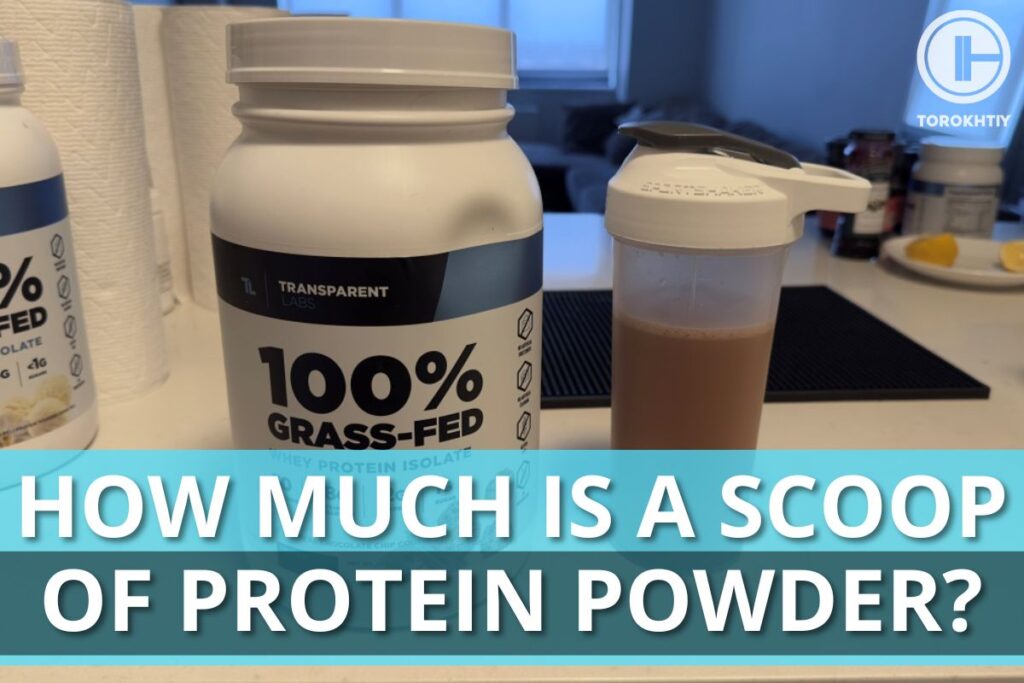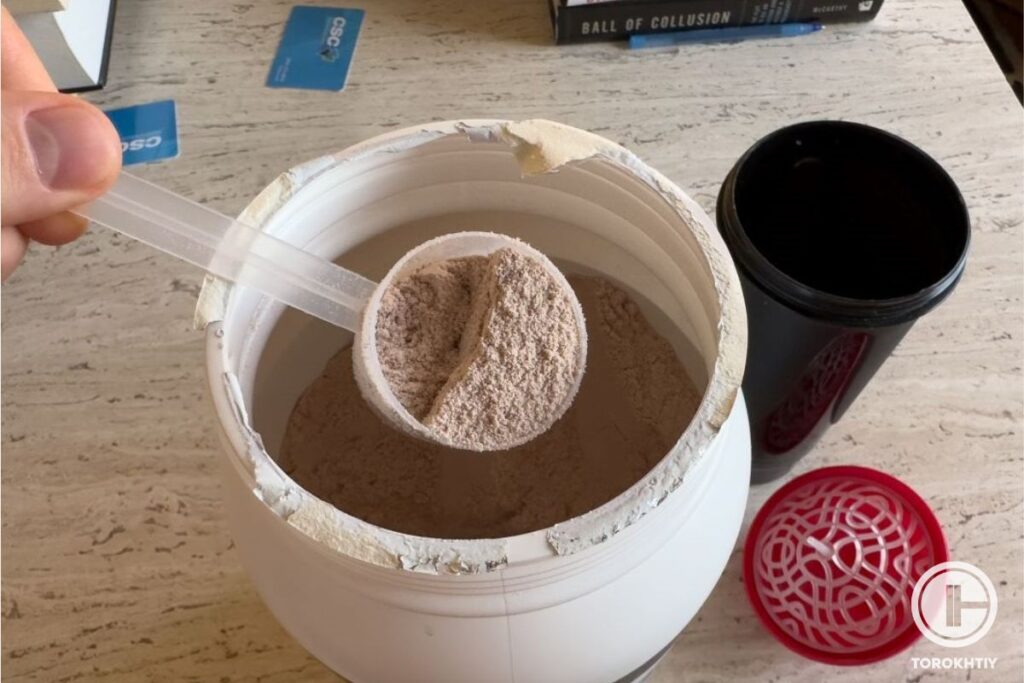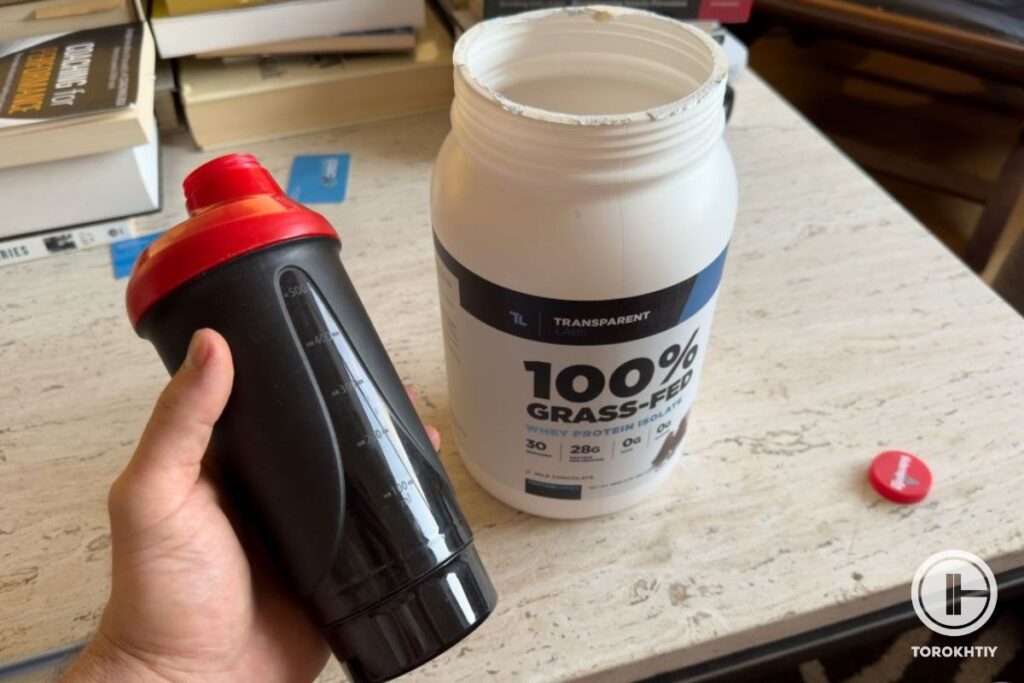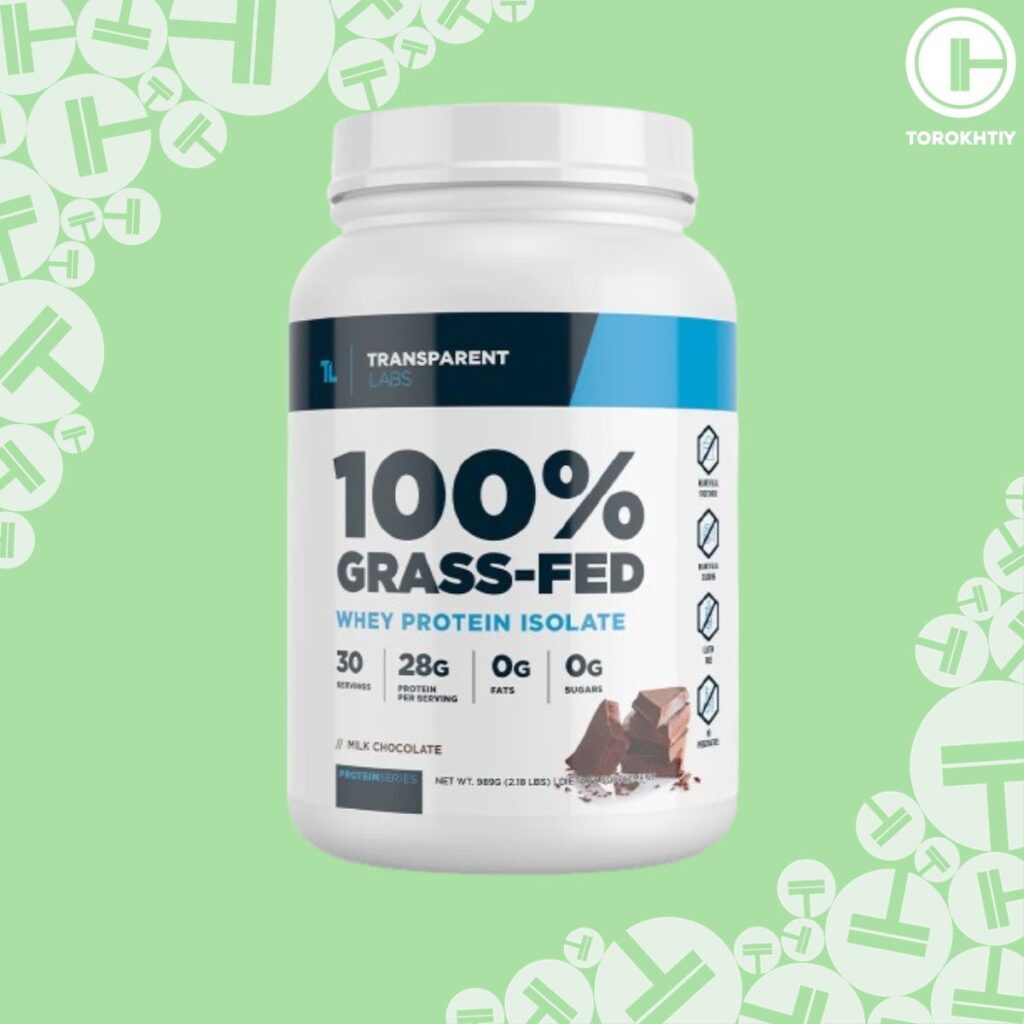How Many Grams Is a Scoop of Protein Powder?
Author:
Unlock your full potential by engaging with our experts and community! Have questions about your fitness journey or looking for expert advice on weightlifting techniques? Don’t hesitate — leave a comment below and Oleksandr Maksymenko will provide a personalized answer and insights to help you reach your goals.
Torokhtiy is reader-supported. Some links are affiliate links, and we may earn a commission at no extra cost to you. See our disclosure page for details.
There are those rare situations when you end up losing your whey protein scoop. In those cases, you might find yourself asking the question, “how much is a scoop of protein powder?” Well, don’t worry because we’ll cover that up for you.
If you’re wondering how much is a scoop of protein powder, the average scoop size is 29 grams, but you must know that the scoop size differs from brand to brand. However, at the back of the box, you’ll find a Nutrition Facts Label that contains the scoop size details.

What Is a Scoop of Protein?
Technically, a scoop of protein means the amount of protein powder that will fill up the scooper that holds the protein powders. There’s no definite answer to the question, “how big is a scoop of protein powder?”
Because it will always depend on the brand you’re referring to, as the exact amount always differs in brands. Some brands have a larger protein powder scoop size, while others would have smaller ones.
All protein powder supplements have a scooper inside of them that helps you transfer the protein powder to your shaker. Now, let’s take a look at why scoop sizes vary in different kinds of protein powders.

Why Do Scoop Sizes Vary?
There are plenty of reasons why the scoop size for protein powder may vary, but let’s take a look at the most important ones.
1. Protein Concentration
Some brands might have more protein in one scoop as compared to other protein brands. Also, you might be knowing that the amount of protein in one scoop of protein powder is mostly between 25-30 grams. So, in such a situation where there’s more protein in the protein powder, there’s no need for a larger scoop.
A 1kg box of protein powder in such a situation can easily get 30 scoops of protein with a smaller scoop size, as the amount of protein is sufficient. For example, one scoop of protein powder could be 28 grams, with 24 grams of protein in it.
In other situations where the concentration isn’t that high and the protein isn’t that refined, larger scoops could be needed. For instance, another brand of protein might have a 36 gram scoop size with 26 grams of protein in it.
2. Different Brands Have Different Scoops
Brands have their own approaches to manufacturing the protein powder, and there are so many brands in the world, so you can imagine the diversity. To put it shortly, different manufacturers have different processes, so they have to use different scoops.
In the end, it all boils down to how densely the protein is packed in a scoop and how much protein powder is heaped from a scoop.

How to Measure 1 Scoop of Protein?
Firstly, to know how to measure 1 scoop of protein, you need to know how much protein is in one scoop of protein powder for the brand that you’re using. To find that out, look for the size of the scoop and the serving behind the box on the Nutrition Facts label.
Usually, there are two scoops for one serving. So, let’s assume that one serving is 48 grams. It means that the size of one scoop would be 24 grams. Please note that in almost all cases, that’s the size of a leveled scoop and not a heaping scoop.
Therefore, you need to make sure that you fill the scoop up entirely with the powder and then level it by removing the amount of protein that rises above the scoop. It’s best done with a knife. That is more than enough to make sure that you have accurately taken out one scoop of protein.
However, if you still need to double-check it, you can measure the scoop of protein on a food weighing machine.
There are more methods to know how many grams is a scoop of protein powder, and this one involves tablespoons. Now, one tablespoon is 15 grams. So, if you lose your scooper, you can still accurately take one scoop of protein by knowing the exact scoop size and using a tablespoon accordingly.
The Protein Powder We Recommend
Transparent Labs Grass-Fed Whey Protein
- Serving Size: 32.96g
- Price Per Serving: ~$1.8
- Protein: 28g
- Carbohydrates: 1g (depends on flavor)
- Fat: 0.5g (French Vanilla only)
- Added Sugar: 0g
- Calories Per Serving: 120
- Recommended By Athletes: Hafþór Júlíus Björnsson, Terron Beckham, Paul Sklar
I recommend Transparent Labs Grass-Fed Whey Protein Isolate and there are many reasons for this: it contains only 100% protein isolate (not a mix of concentrate and isolate), a whooping 28 grams of protein per serving and zero grams of fat.
This product has versatile macro breakdown and this is why it’s suitable for any goal. Another additional bonus – very high score on Labdoor (which means that this protein is third party tested).
FAQ
How Many Grams Is a Scoop of Protein Powder?
If you want to know how big is a protein scoop, you must check the back of the box and search for the Nutrition Facts label. That’s mainly because one scoop of protein powder always differs according to the brand.
Over there, you’ll get the exact size of one scoop of the protein powder brand you’re using. Generally, a scoop size could be anywhere from 30-45 grams more or less.
How Many Tablespoons in a Scoop of Protein Powder?
The answer to the question, “how many tablespoons in a scoop of protein powder” is pretty simple. One tablespoon is 15 grams, and if your protein powder brand’s scoop size is 30 grams, then you’d have to scoop out two tablespoons of protein powder from the box.
The 1 scoop to tablespoon value differs according to different brands, but in this case, it’s two tablespoons for one scoop of protein.
Conclusion
That was all that was needed to know to accurately measure a scoop of protein powder, with or without a scoop. If you know about more varying factors of different scoop sizes or scoop size measuring tips for different brands, let us know in the comment section below.
Also Read:
- Mass Gainer vs Whey Protein
- Is Protein Powder Good For Teens
- Difference Between Isolate and Concentrate Whey Protein
- Collagen Protein vs Whey Protein
- Protein vs Bcaa
- Best Protein Powder For Runners
- Can You Put Protein Powder In Coffee
- Does Protein Make You Poop
- Whey Isolate Protein Guide
References:
- How Much is in a Scoop of Protein Powder? // Suppwise: https://suppwise.com/how-much-is-in-a-scoop-of-protein-powder/
- Transparent Labs 100% Grass-Fed Whey Protein Isolate // Abdoor: https://labdoor.com/review/transparent-labs-100-grass-fed-whey-protein-isolate.
- How much is a scoop of protein powder? // Gainful: https://www.gainful.com/blog/how-much-is-a-scoop-of-protein-powder/.
- Powder Supplements Manufacturing Process // NutraScience labs: https://www.nutrasciencelabs.com/blog/whats-the-process-for-manufacturing-protein-powder-supplements.
- Photos are made by Torokhtiy Media team.
Why Trust Us?
With over 20 years in Olympic weightlifting, strength training, nutrition coaching, and general fitness our team does its best to provide the audience with ultimate support and meet the needs and requirements of advanced athletes and professional lifters, as well as people who strive to open new opportunities and develop their physical capabilities with us.
By trusting the recommendations of our certified experts in coaching, nutrition, and sports training programming, as well as scientific consultants, and physiotherapists, we provide you with thorough, well-considered, and scientifically proven content. All the information given in the articles concerning workout programming, separate exercises, and athletic performance, in general, is based on verified data.
The product testing process is described in more detail here.
Author: Oleksandr Maksymenko
Certified Sports Nutritionist,
MSc Sports Dietetics
Specializing in: Weight management, Fitness / Sports nutrition
Oleksandr is a professional fitness nutritionist certified by the Fitness Professional Association (FPA). He follows the principles of evidence-based dietetics and fosters a healthy relationship with food in his clients, ensuring there are no strict prohibitions on their favorite foods or frequent lapses. His primary goal is not only to achieve results for you but also to sustain them over the long term, all while enjoying tasty and delicious food.




Still have questions after reading our article? Unlock your full potential by engaging with our experts and community! Don’t hesitate — leave a comment below and Oleksandr Maksymenko will provide a personalized answer and insights to help you reach your goals.